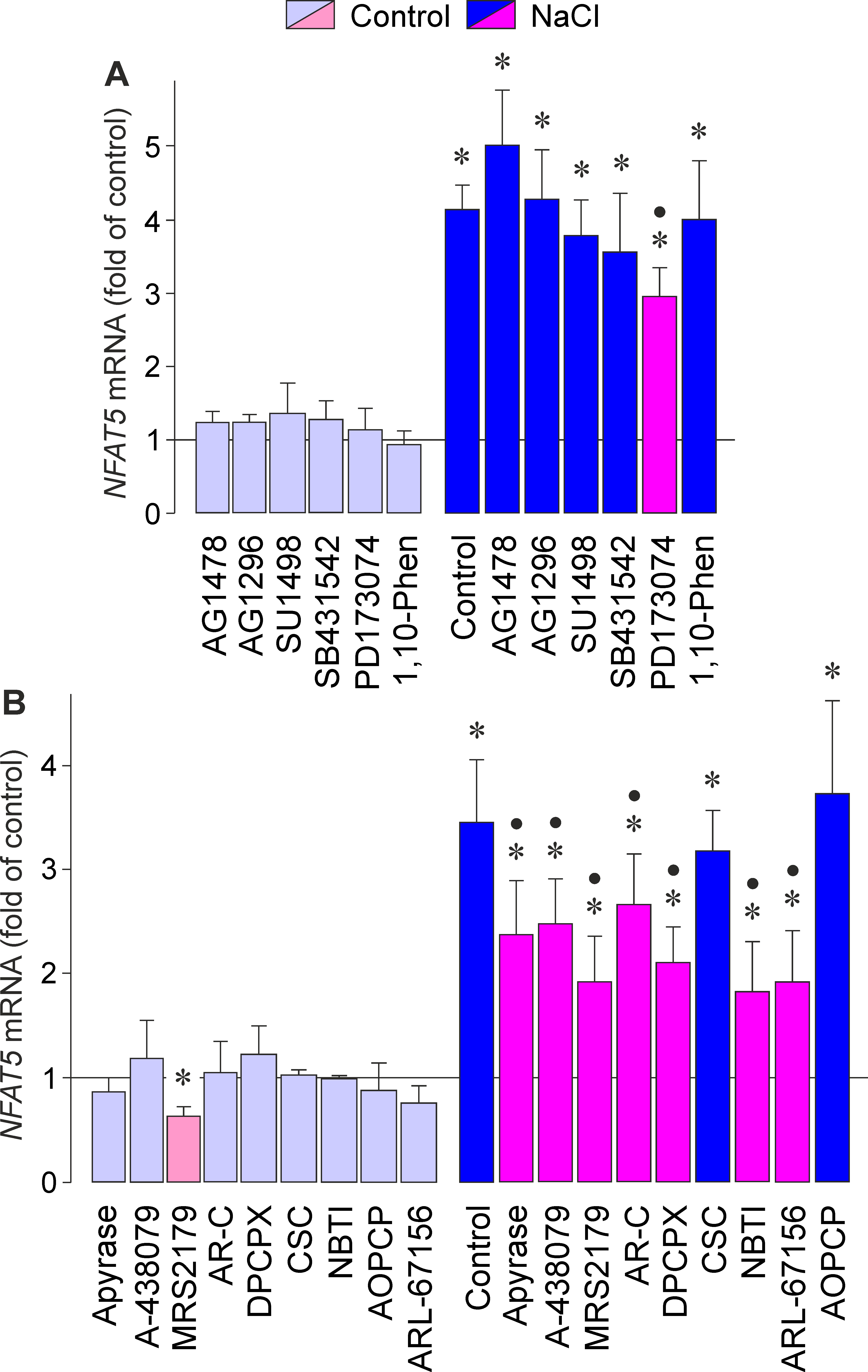Figure 5. Receptor signaling involved in mediating the osmotic expression of the NFAT5 gene in RPE cells. The level of NFAT5 mRNA was determined with real-time reverse transcriptase (RT)-PCR analysis in cells cultured 6 h in iso- (control) and hyperosmotic
(+100 mM NaCl) media. A: Involvement of autocrine/paracrine growth factor receptor signaling. The following blocking agents were tested: the inhibitor
of the epidermal growth factor (EGF) receptor tyrosine kinase, AG1478 (600 nM); the blocker of the platelet-derived growth
factor (PDGF) receptor tyrosine kinase, AG1296 (10 µM); the inhibitor of vascular endothelial growth factor (VEGF) receptor
2, SU1498 (10 µM); the inhibitor of transforming growth factor β1 (TGF-β1) superfamily activin receptor-like kinase receptors,
SB431542 (10 µM); the fibroblast growth factor (FGF) receptor kinase inhibitor, PD173074 (500 nM); and the broad-spectrum
metalloproteinase inhibitor, 1,10-phenanthroline (1,10-Phen; 10 µM). B: Involvement of autocrine/paracrine purinergic signaling. The following blocking agents were tested: the ATP/ADP phosphohydrolase
apyrase (10 U/ml), the P2X7 receptor antagonist A-438079 (50 nM), the P2Y1 receptor antagonist MRS2179 (30 µM), the P2Y2 receptor antagonist AR-C 118925XX (AR-C; 10 µM), the adenosine A1 receptor antagonist 8-cyclopentyl-1,3-dipropylxanthine (DPCPX; 50 nM), the adenosine A2A receptor antagonist 8-(3-chlorostyryl) caffeine (CSC, 200 nM), the antagonist of nucleoside transporters N-acetyl-L-cysteine,
N-nitrobenzylthioinosine (NBTI; 10 µM), the ecto-ATPase inhibitor ARL-67156 (50 µM), and the ectonucleotidase inhibitor adenosine-5′-O-(α,β-methylene)-diphosphate
(AOPCP; 250 µM). Means ± standard error of the mean (SEM) of 3–7 independent experiments using cell lines from different donors.
Significant difference versus unstimulated control: *p<0.05. Significant difference versus NaCl control: ●p<0.05.

 Figure 5 of
Hollborn, Mol Vis 2017; 23:116-130.
Figure 5 of
Hollborn, Mol Vis 2017; 23:116-130.  Figure 5 of
Hollborn, Mol Vis 2017; 23:116-130.
Figure 5 of
Hollborn, Mol Vis 2017; 23:116-130. 